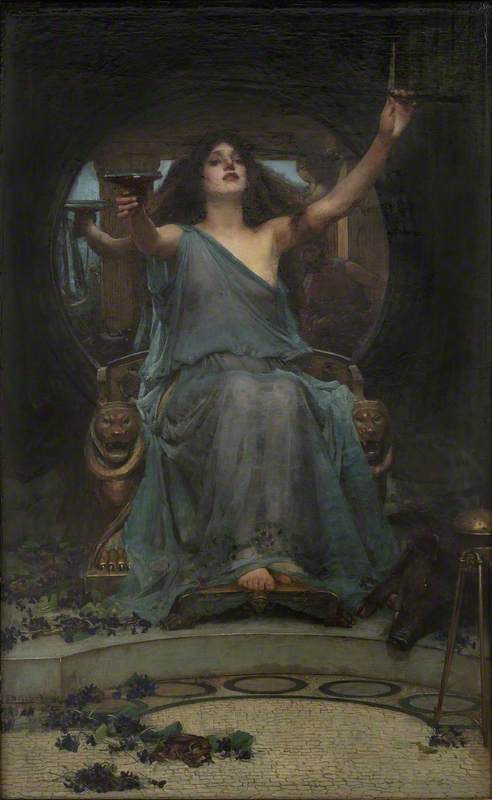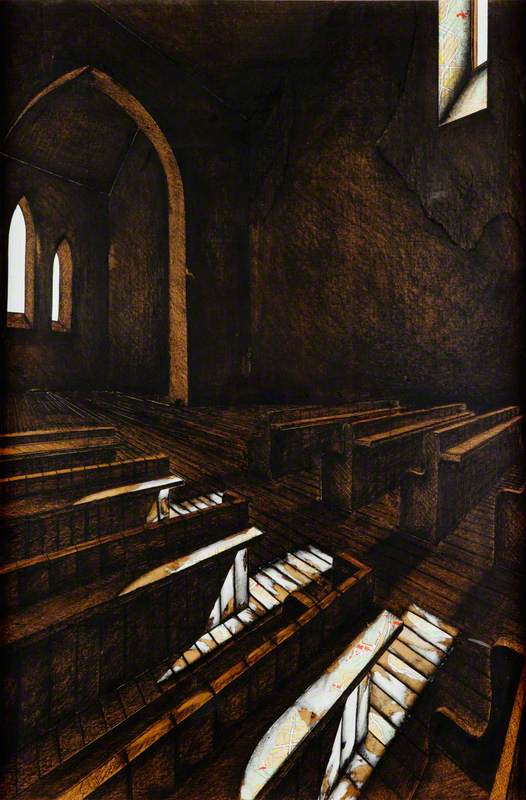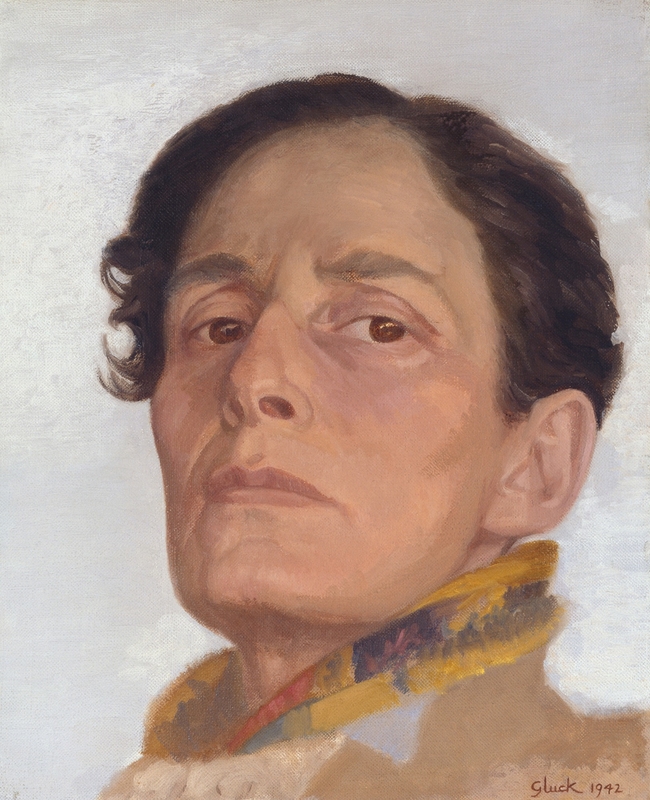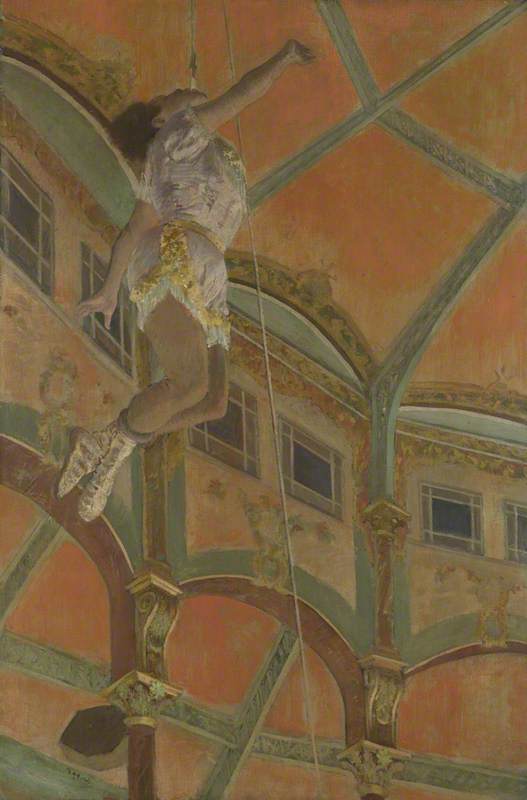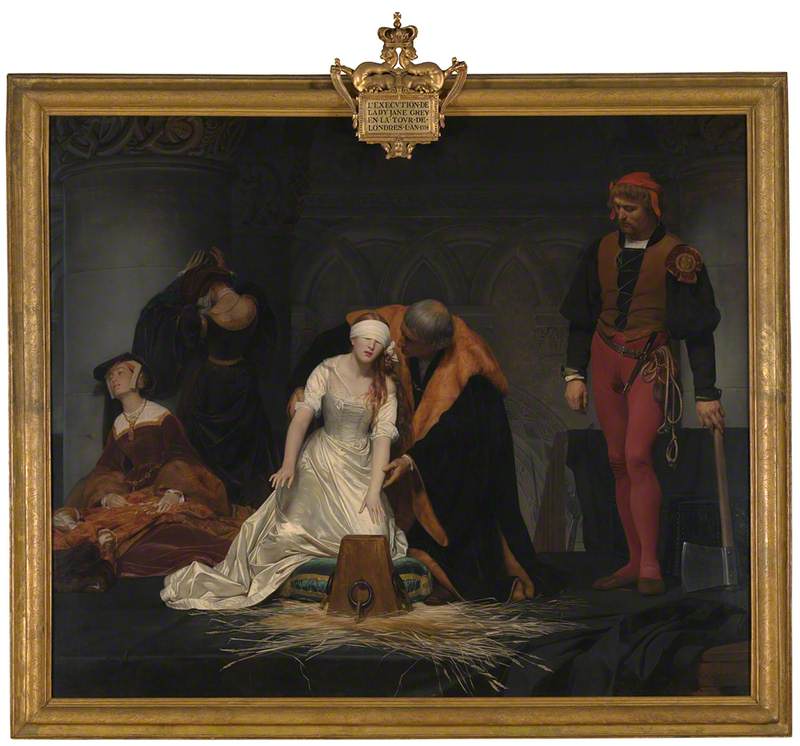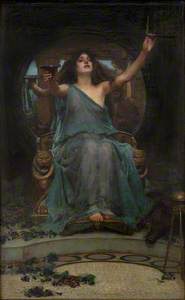In Homer's Odyssey, Circe appears briefly and is portrayed as a one-dimensional character, embodying an archetypal femme fatale who seduces the male hero and leads him to his doom. Indeed, in a poem referencing Circe's Horatian epithet of 'vitreamque', meaning 'glassy', Louis MacNeice notes the goddess as having 'something of glass about her, of dead water.' Circe, seemingly transparent like glass, lacks substantial virtues at first glance.
Remaining faithful to Homer's depiction of Circe as a femme fatale, Waterhouse drapes her in a revealing blue gauze and lowers the left side of her robe to expose her bare breast. The creamy whiteness of her chest, combined with her diaphanous garments, further accentuates Circe's allure as she looks down haughtily at Ulysses, intent on seducing him.
Waterhouse associates Circe's brilliance and glass-like qualities with actual glass, symbolised by the reflection of Ulysses, the male gaze, in the mirror behind her, beholding her dazzling beauty. In an article for The Art Newspaper, Markus Bertsch notes that Victorian paintings that depicted eroticised female characters were 'to a large extent products as well as projections of distinctly male fantasies.' Indeed, Circe reflects Ulysses' 'male fantasies' and obscures her true character as she becomes what he desires to see. This is what makes Circe dangerous: like the wine in her hand, she possesses the power to make the hero forget about his oikos ('household') and wife by appealing to his desires, ultimately preventing his nostos ('homecoming') by enticing Ulysses to stay with her in Aeaea, promising a life of pleasure.
To the Victorians of that time, Waterhouse's portrayal of Circe's exposed breast signifies her threatening sexuality and deviation from accepted norms for the ideal woman, serving to caution men of the capacity that women have to dismantle the structure of society. Waterhouse takes this portrayal of a 'deviant' woman further: while Ulysses takes control and overpowers Circe in Homer's tale, Waterhouse's portrayal emphasises the power of the sorceress. Encircled by purple flowers – a colour symbolising royalty – and enthroned between two bronze lions, Circe thinks of herself as a queen. She dominates the painting as she towers above the observer, with a cup and wand in hand, and Ulysses is subordinated to the reflection in the periphery of the mirror.
The recurring theme of the femme fatale in Pre-Raphaelite paintings was undoubtedly a response to the tension between the increasingly visible and divisive Women's Movement and The Contagious Diseases Act of 1864. This act imposed stringent regulations on prostitutes by the police and stemmed from the stigma surrounding sex and societal expectations for women to refrain from extramarital affairs. Engaging in such extramarital affairs was considered a moral failing for women.
Waterhouse symbolises Circe's sexual liberation through her wand, a masculine symbol of power with phallic connotations. However, Ulysses seeks to 'correct' this dynamic by exerting sexual dominance over her. Acting on Hermes' advice, he draws his 'sharp sword' and 'lung(es) at Circe'. The sword, a more potent phallic symbol in the 'correct' masculine hands, forces Circe into a submissive role.
As women like Circe inverted the 'natural' order where women were subservient to men, they were seen as anomalies in a patriarchal society and perceived as needing to be 'corrected'. Thus, in these 'bedtime stories that patriarchy tells itself' (Jess Zimmerman), portrayals of women using the archetype of the femme fatale serve to perpetuate a sexist image that has 'devalued women for centuries through demonisation, sexualisation and objectification' (Selvi Göktepe in a 2023 BBC Culture article). Circe, akin to her mirror, acts as a stark reflection of the pervasive misogyny in our society, revealing deep-seated biases and unequal power dynamics that persistently shape our perceptions of women.
Tony Choy, first-place winner of Write on Art 2023, Years 12/13
Further reading
Louis MacNeice and Peter McDonald (ed.), Collected Poems: Louis MacNeice, Wake Forest University Press, 2013
Madeline Miller, Circe, Bloomsbury Publishing, 2019
Jess Zimmerman, Women and Other Monsters: Building a New Mythology, Beacon Press, 2021
